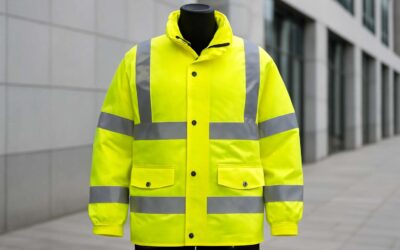A safety vest is a vital piece of protective gear that keeps workers safe on the job. They’re available in a variety of styles and colors to suit a wide range of needs.
Class of Safety Vest
There are three classes of safety vests, each designed for a specific work zone. The more hazardous the work area, the higher the Class of Safety Vest a worker is required to wear.
The American National Standards Institute (ANSI) sets the requirements for each of these classes, with varying amounts of reflective material and background fabric color. The more reflective material and the higher the intensity of the background fabric color, the more visible a worker is to other people on the jobsite.
High Visibility
A high visibility vest has a combination of reflective materials and brightly colored background fabrics. This provides a highly visible line of defense for the wearer, especially at night when traffic can be more difficult to see.
ANSI-approved vests feature either a zipper or a hook and loop closure to hold the vest closed. The zippers are more reliable and easier to use, while the hook and loop fasteners allow the closure to quickly break open in an emergency without pulling a worker’s arm or neck.
High-Visibility Materials
Reflective material makes up the majority of a safety vest’s overall surface. Depending on the type of work, these vests can have a minimum of 155 square inches of contrasting tape on each side of the vest or 201 square inches of reflective tape across the whole vest. The contrasting tape should be positioned on the front, back and shoulder areas to make sure everyone can see it.
Combined-Performance Materials
Some vests have a combination of retroreflective tape and fluorescent material for daytime visibility. This is a good option if your workplace requires the wearer to be visible at all times and you need a more durable safety vest for long hours on the job.
Pockets and D-ring Accessibility
Some worksites require workers to carry specific equipment on the jobsite, such as radios or life-saving devices. Fortunately, most vests come with pockets or D-ring access points to easily accommodate these items.
Identifiers and Lettering
Some workers are also required to wear printed identifiers or lettering on their vests. These can include team names, ID badges and company logos. These can help identify the worker and their team when in an emergency.
Care Instructions
The care instructions for a safety vest should include the maximum number of times that the vest can be washed and the length of time it can be worn before washing it again. It’s also important to keep the safety vest free from stains and debris that can affect its visibility.
Safety Vests in Every Color
There are many types of safety vests, each with a different style and functionality. They’re available in a wide variety of colors, from orange to lime yellow and even neon green.



0 Comments